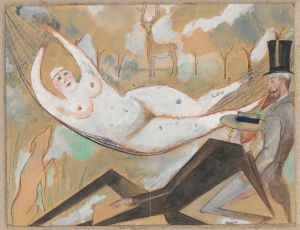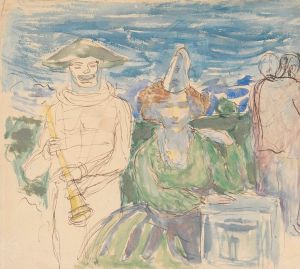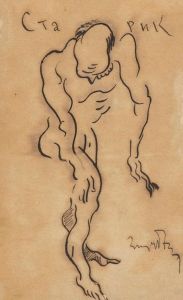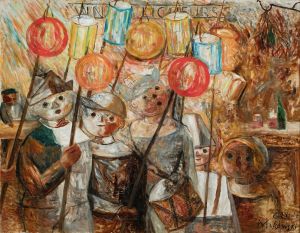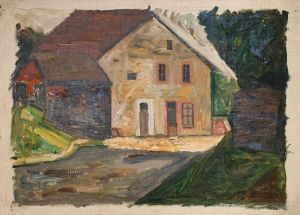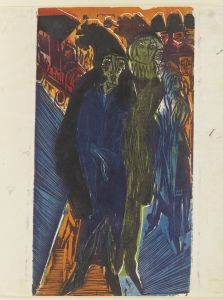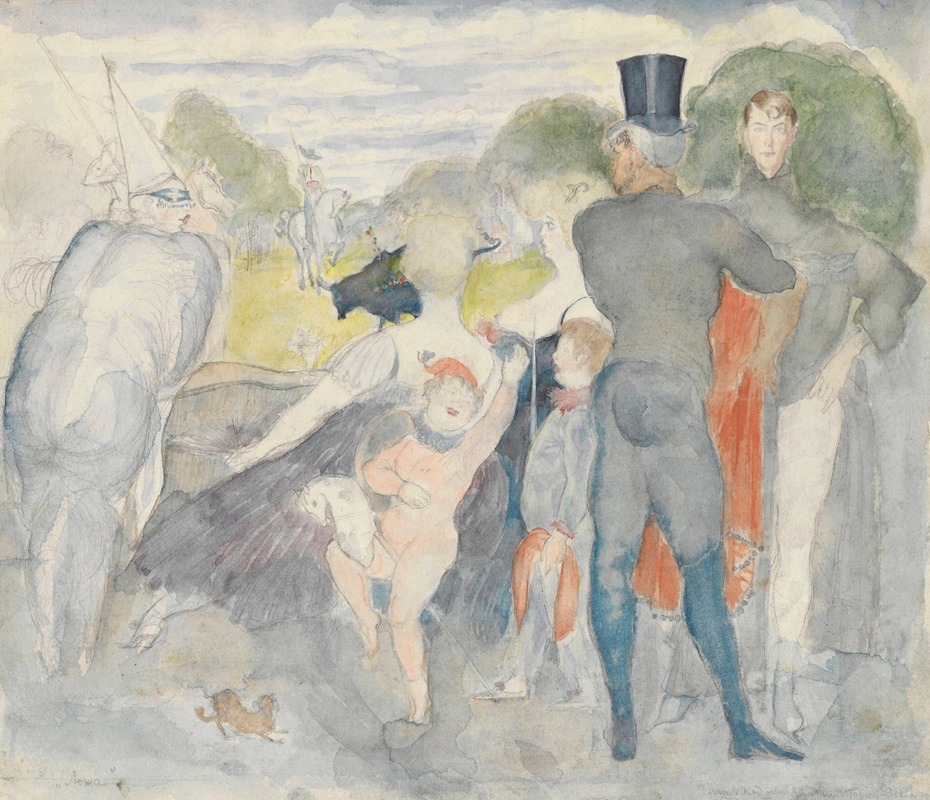
Booth I with a self-portrait
A hand-painted replica of Zygmunt Waliszewski’s masterpiece Booth I with a self-portrait, meticulously crafted by professional artists to capture the true essence of the original. Each piece is created with museum-quality canvas and rare mineral pigments, carefully painted by experienced artists with delicate brushstrokes and rich, layered colors to perfectly recreate the texture of the original artwork. Unlike machine-printed reproductions, this hand-painted version brings the painting to life, infused with the artist’s emotions and skill in every stroke. Whether for personal collection or home decoration, it instantly elevates the artistic atmosphere of any space.
"Booth I with a Self-Portrait" is a painting by the Polish artist Zygmunt Waliszewski, a prominent figure in the Polish art scene of the early 20th century. Waliszewski was born on December 1, 1897, in Saint Petersburg, Russia, and later moved to Poland, where he became an influential painter and a member of the Kapists, a group of Polish colorists.
Zygmunt Waliszewski's work is characterized by its vibrant use of color and expressive brushwork, often drawing inspiration from Post-Impressionism and Fauvism. His style reflects a blend of Western European modernist influences and his own unique artistic vision. Waliszewski's oeuvre includes portraits, still lifes, landscapes, and genre scenes, all marked by his dynamic and colorful approach.
"Booth I with a Self-Portrait" is a notable example of Waliszewski's artistic style. The painting features a self-portrait of the artist, which is a common theme in his work, as he often explored his own image and identity through his art. In this particular piece, Waliszewski presents himself within a booth, a setting that adds an intriguing context to the self-portrait. The booth may symbolize a space of introspection or a stage for self-presentation, though the exact interpretation is left to the viewer.
The composition of the painting is dynamic, with bold, expressive brushstrokes and a rich palette of colors. Waliszewski's use of color is particularly striking, as he employs a range of hues to create depth and texture within the work. The self-portrait itself is rendered with a sense of immediacy and vitality, capturing the artist's likeness with a combination of realism and abstraction.
Waliszewski's self-portraits are often seen as a means of exploring his own identity and the role of the artist in society. By placing himself within the booth, he may be commenting on the nature of artistic creation and the relationship between the artist and the viewer. The booth could also be interpreted as a metaphor for the artist's studio or a space of artistic experimentation.
Throughout his career, Zygmunt Waliszewski remained dedicated to his artistic practice, despite facing numerous challenges, including health issues and the turbulent political climate of his time. His work continues to be celebrated for its bold use of color and its contribution to the development of modern art in Poland.
"Booth I with a Self-Portrait" exemplifies Waliszewski's innovative approach to painting and his ability to convey complex ideas through his art. The painting remains an important part of his legacy, showcasing his talent for self-representation and his commitment to pushing the boundaries of traditional artistic conventions.










